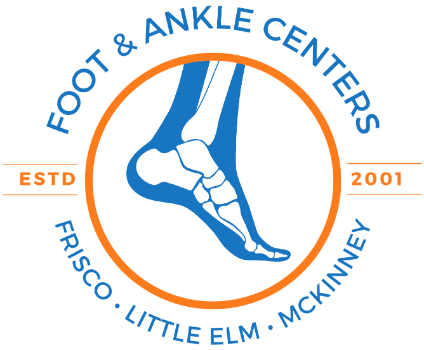Heal from within with PRP Therapy at Foot and Ankle Centers
Saturday, June 07, 2025 | By: Foot & Ankle Centers of Frisco and Plano
Did you know that the human body has an incredible ability to heal itself? This powerful capability can be harnessed even more effectively through innovative medical treatments like Platelet-Rich Plasma (PRP) Therapy. If you've been struggling with foot and ankle issues, this could be the answer you've been looking for. In this post, we'll unpack what PRP Therapy is, how it works, and why it might be the ideal solution for chronic pain and injuries. Get ready to dive deep into your body's natural healing mechanisms and explore the potential of PRP Therapy for your recovery journey.
As technology advances in the field of medicine, we see increasing awareness of alternative therapies that complement traditional treatment options. PRP Therapy is one such treatment that is gaining traction among healthcare providers and patients alike. What is PRP Therapy exactly, and how can it benefit those suffering from foot and ankle problems?
Understanding PRP Therapy
Platelet-Rich Plasma (PRP) Therapy fundamentally relies on the body’s own healing abilities. By using concentrated platelets derived from the patient’s own blood, physicians can accelerate the healing process of injured tissues. This technique has shown effectiveness in treating various issues related to the foot and ankle, particularly chronic tendon pain and ligament injuries.
How PRP Works
The process of PRP therapy consists of several specific steps:
1. Blood Draw: A small amount of blood is drawn from the patient, similar to a routine blood test.
2. Separation Process: The blood is placed in a centrifuge, which spins rapidly to separate the components of the blood. This process concentrates the platelets within the plasma, significantly increasing their concentration compared to regular blood.
3. Injection: The concentrated PRP is then injected into the targeted injured site, providing a rich source of growth factors and cytokines needed for healing.
Why Choose PRP Therapy?
Reduced Downtime
Patients often experience quicker recovery times compared to traditional surgical methods. PRP therapy is minimally invasive, allowing individuals to return to daily activities without the prolonged downtime associated with surgery. This is especially advantageous for busy professionals and active individuals returning to sports or fitness routines.
Fewer Side Effects
Since the therapy uses the patient's own blood, the risk of allergic reactions or contraindications is significantly minimized. This natural approach greatly reduces the potential for adverse side effects commonly associated with medications or invasive procedures.
Conditions Treated by PRP Therapy
PRP therapy is particularly beneficial for a range of foot and ankle conditions including:
- Chronic Tendon Pain: Conditions like Achilles tendonitis or plantar fasciitis can greatly hinder mobility. PRP therapy helps regenerate damaged tendons.
- Ligament Injuries: Injuries to ligaments, such as ankle sprains, can lead to prolonged periods of instability and pain. PRP therapy assists in healing the ligaments efficiently.
- Arthritis: Platelets possess anti-inflammatory properties that can significantly alleviate arthritic symptoms within the joints of the foot and ankle.
- Nonhealing Ulcers: For diabetic patients or those with circulatory issues, PRP therapy can enhance healing in nonhealing ulcers by promoting tissue regeneration.
What to Expect During PRP Treatment
Initial Consultation
Before beginning treatment, a healthcare professional will conduct a thorough evaluation of your medical history and symptoms. This diagnostic approach helps determine if PRP therapy is suitable for your condition.
Treatment Sessions
The PRP procedure usually requires one or more treatment sessions, depending on the severity of the condition being treated. Each session typically lasts about 30 minutes to an hour.
Recovery Process
Post-treatment, it is normal to experience some swelling or discomfort at the injection site. These side effects typically resolve within a few days. Most patients can resume light activities almost immediately, while more strenuous exercises should be reintroduced gradually based on the medical advice given.
The Evidence Behind PRP Therapy
Numerous studies have highlighted the efficacy of PRP therapy in treating chronic pain and injuries. In one randomized control trial conducted on patients with chronic tennis elbow, a significant improvement in pain levels was noted following PRP injections, confirming the treatment's potential.
Furthermore, systematic reviews of literature assessing the effectiveness of PRP therapy in treating sports-related injuries suggest a favorable outcome, particularly for tendon injuries. This reinforces the growing belief within the medical community regarding PRP’s role in innovative healthcare practices.
Frequently Asked Questions
Is PRP therapy painful?
Patients may experience slight discomfort during the injection process, but it is generally well-tolerated.
How long does PRP therapy take to show results?
Improvements may vary based on individual circumstances, but many patients notice results within a few weeks. For optimal healing, follow-up treatments could be advised.
Are there any contraindications?
PRP therapy is not recommended for patients with certain blood disorders or those taking blood thinners, as it could affect the healing process.
Success Stories
Patients from various demographics have shared their success stories upon opting for PRP therapy. Individuals who struggled with chronic pain have reported significant improvements in their ability to walk, run, and engage in activities they once thought impossible.
By choosing a therapeutic approach that encourages healing from within, these patients have found not just relief, but also a renewed sense of life satisfaction.
Moving Forward with PRP Therapy
Embracing your body's innate ability to heal using PRP therapy is indeed a transformative decision. Whether you're tired of living with chronic pain or simply want to improve your foot and ankle function, PRP offers a promising option based on scientific principles and patient testimonies.
Integrating this method into your treatment plan can usher in a new era of healing and recovery.
So what do you do now? If you believe PRP therapy could help you, take the first step towards recovery by scheduling an appointment with a qualified healthcare provider at Foot Foot & Ankle Centers today. Don’t let foot and ankle pain hinder your lifestyle any longer! Let’s make a change for the better!


Leave a comment
0 Comments